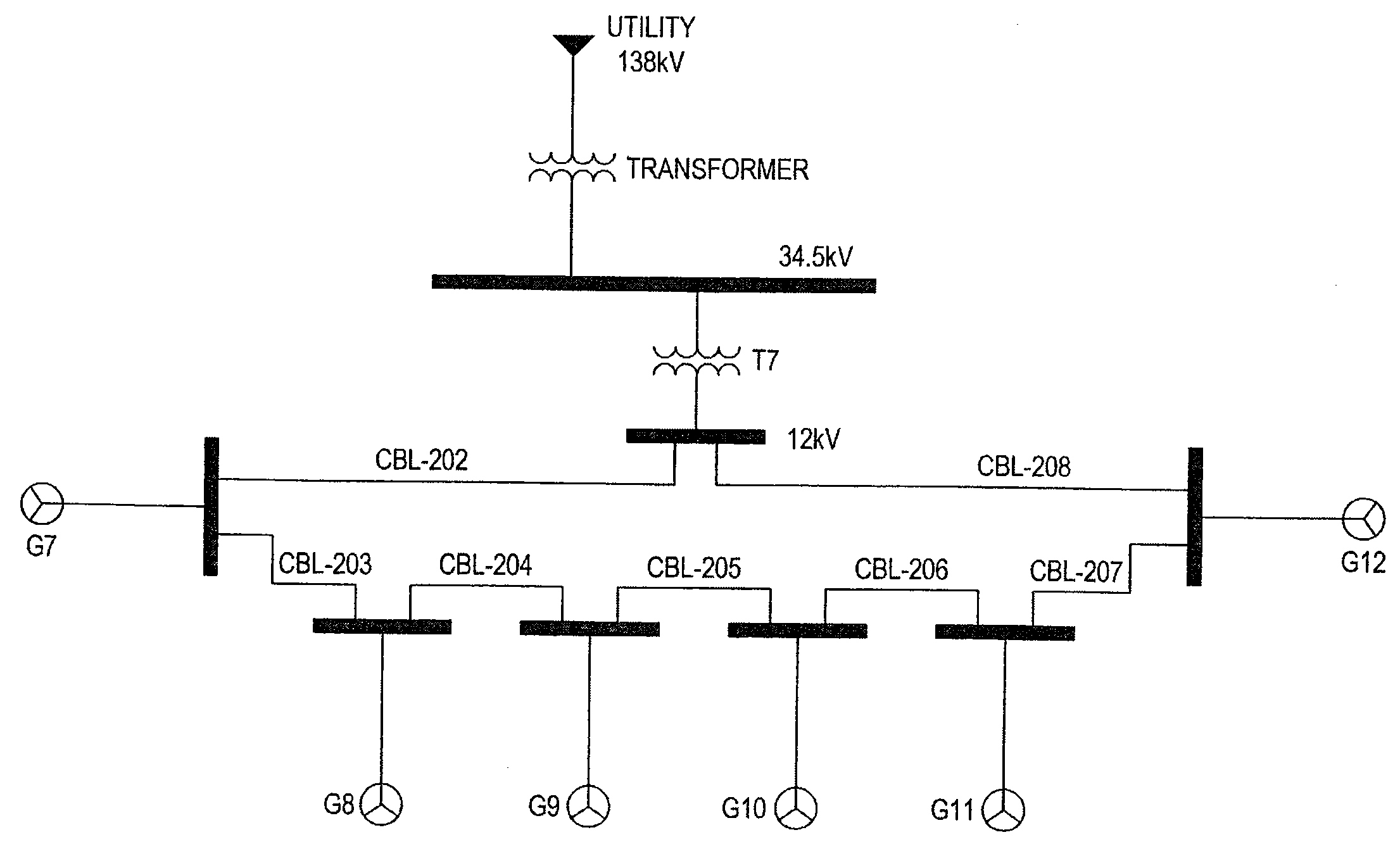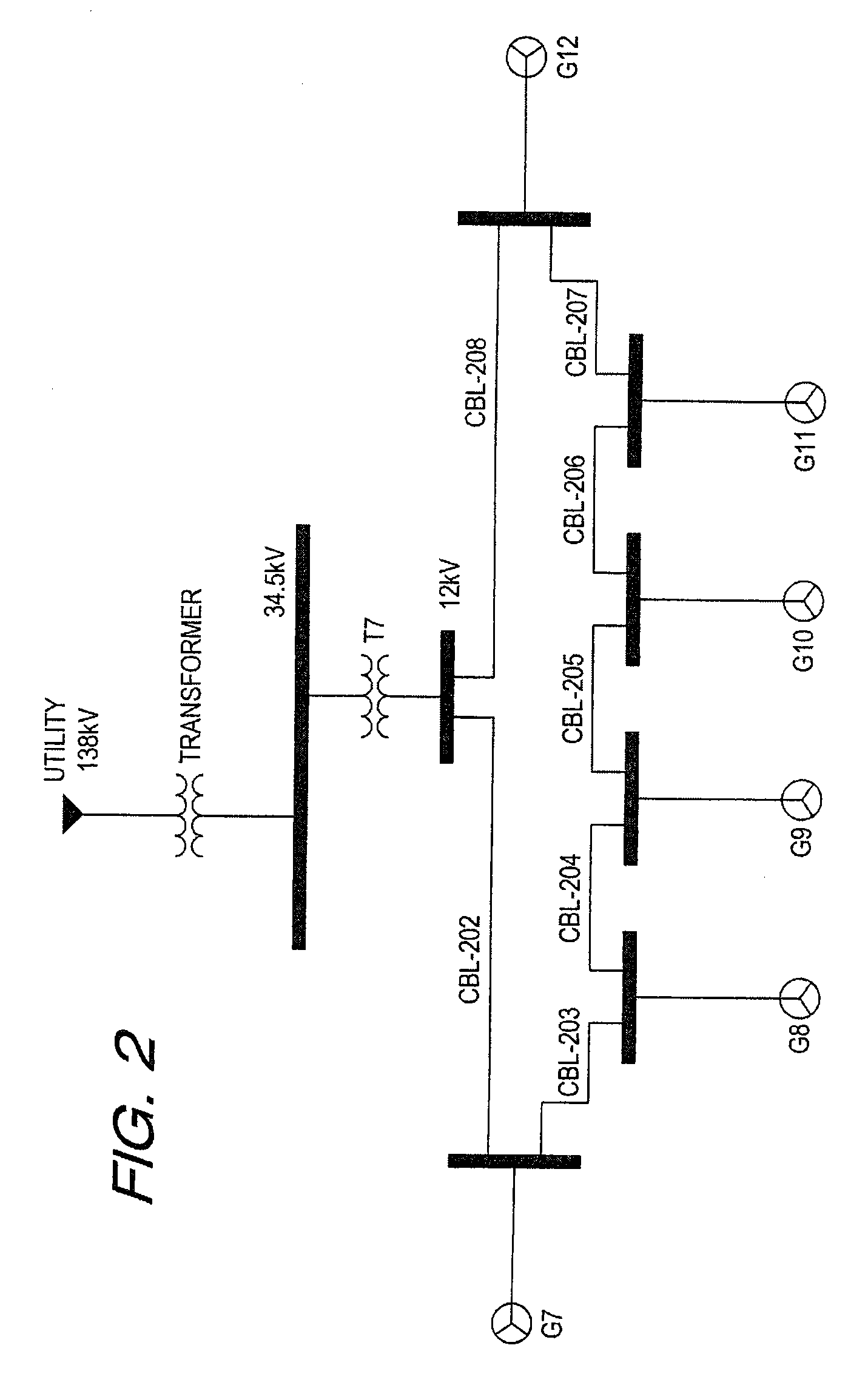Intelligent Power Collection Network
- Summary
- Abstract
- Description
- Claims
- Application Information
AI Technical Summary
Benefits of technology
Problems solved by technology
Method used
Image
Examples
example 1
[0071]To collect power from twelve generators via four transformers, as depicted in FIG. 5. For simplicity, assume that each transformer (T11-T14) is rated to collect from three generators (for a total of twelve generators, G25-G36). As shown in FIG. 5, each transformer has two disconnecting devices; one -A device and one -B device (70-A / B, 90-A / B, 110-A / B, and 120-A / B), on the generator side of the transformer, and one disconnecting device 130 on the high side of the transformer. The TRIP-A signal is generated when current exceeds an instantaneous threshold in any of the -A devices. In contrast, the TRIP-B signal for each -B device (e.g., 70-B, 90-B, 110-B, and 120-B in the Figure) will only assert when the trip threshold for that -B device is exceeded. The TRIP-B signal is only wired to the particular -B device associated with that relay, plus the associated generator breakers, and the lockout relay for the -A device that is at the other end of the string. A time-overcurrent eleme...
example 2
[0082]FIG. 6 depicts a slightly more complex network. In this case, we have added another transformer T15 and string of generators G37 to G39, in parallel with one of the strings in the network of FIG. 5. The additional transformer T15 includes two disconnecting devices; one -A device and one -B device (160-A, 160-B), on the generator side of the transformer, and one disconnecting device 130 on the high side of the transformer. The resulting network is one realistic way in which wind turbine generators, for example, might be connected to accommodate their physical layout, while minimizing the length of cables.
[0083]In order to properly segment this network, a piece of switchgear 170-A should be added to allow the appropriate segmentation, as shown in FIG. 6. Device 170-A merely needs to be capable of being tripped in response to the TRIP-A signal, and reclosed again remotely by the CLOSE-A signal.
example 3
[0084]FIG. 7 shows an example of a network where four strings are connected in a “loop” fashion, and five additional generators G40 to G44 and on transformer T16 are added as radial spurs. The operating sequence would be very similar to that for FIG. 6. The additional transformer T16 includes two disconnecting devices; one -A device and one -B device (180-A, 180-B), on the generator side of the transformer, and one disconnecting device 130 on the high side of the transformer. The -A device, 180-A, in the radial spur would have to be treated the same as the 120-A device that is connected to T14. In other words, this 180-A device would be locked out if the Ti 170-B device trips, and would be re-closed by the CLOSE-A signal if it is not locked out.
[0085]Operating Sequences for the Intermediate Protection Scheme:
[0086]The following operating sequences specifically describe the system shown in FIG. 5, but can also be adapted and applied to the examples shown in FIGS. 6 and 7.
[0087]The in...
PUM
 Login to View More
Login to View More Abstract
Description
Claims
Application Information
 Login to View More
Login to View More - R&D
- Intellectual Property
- Life Sciences
- Materials
- Tech Scout
- Unparalleled Data Quality
- Higher Quality Content
- 60% Fewer Hallucinations
Browse by: Latest US Patents, China's latest patents, Technical Efficacy Thesaurus, Application Domain, Technology Topic, Popular Technical Reports.
© 2025 PatSnap. All rights reserved.Legal|Privacy policy|Modern Slavery Act Transparency Statement|Sitemap|About US| Contact US: help@patsnap.com



